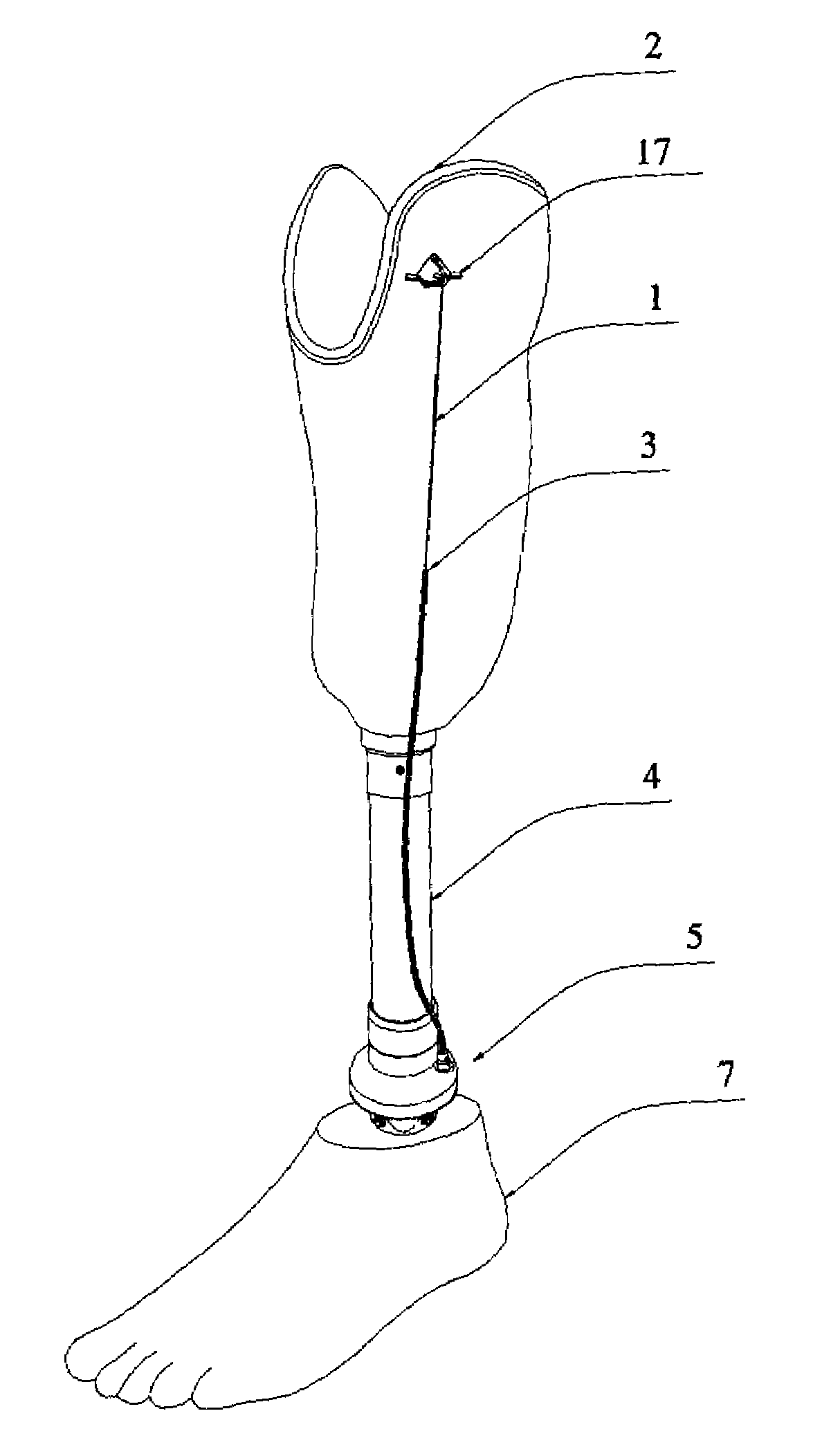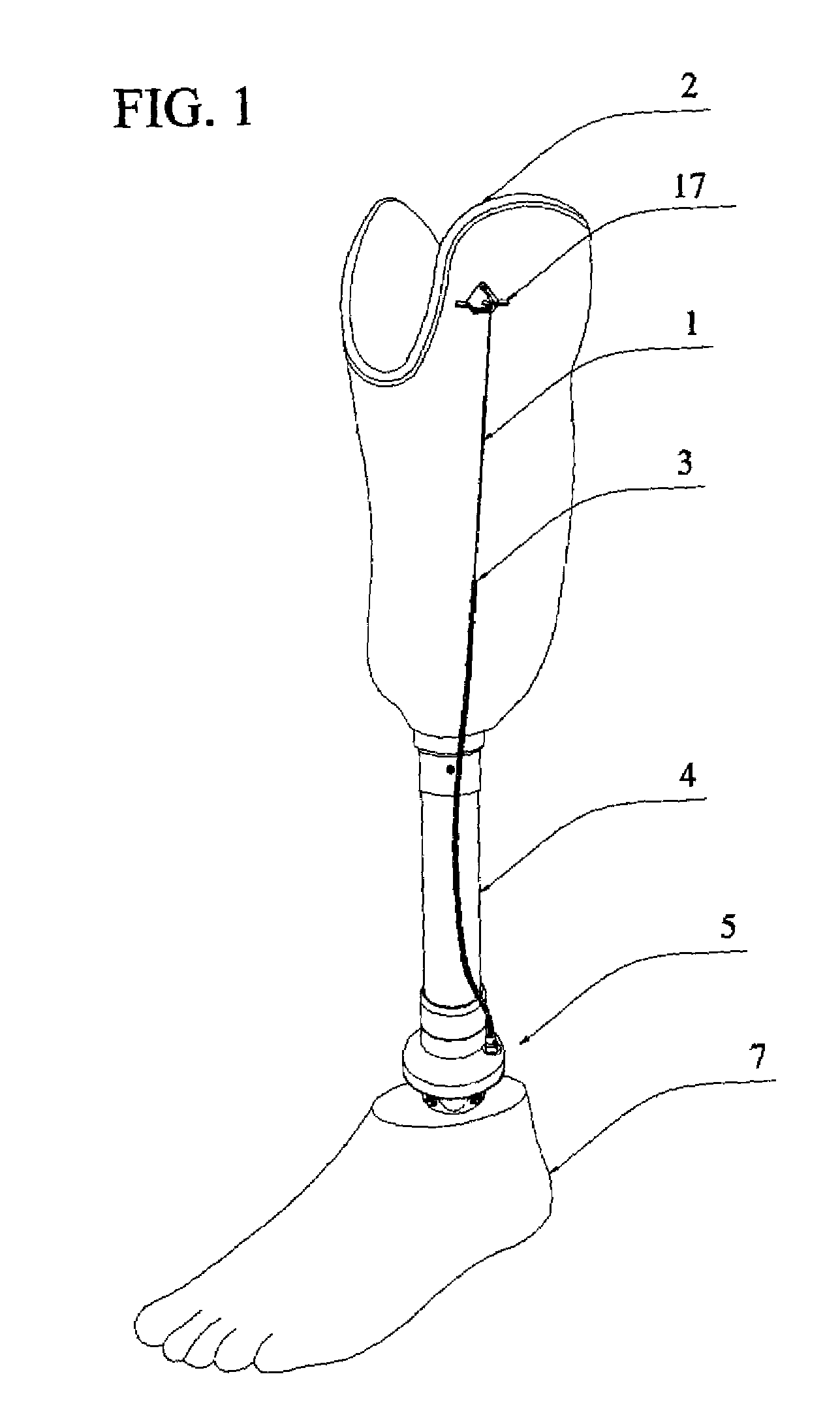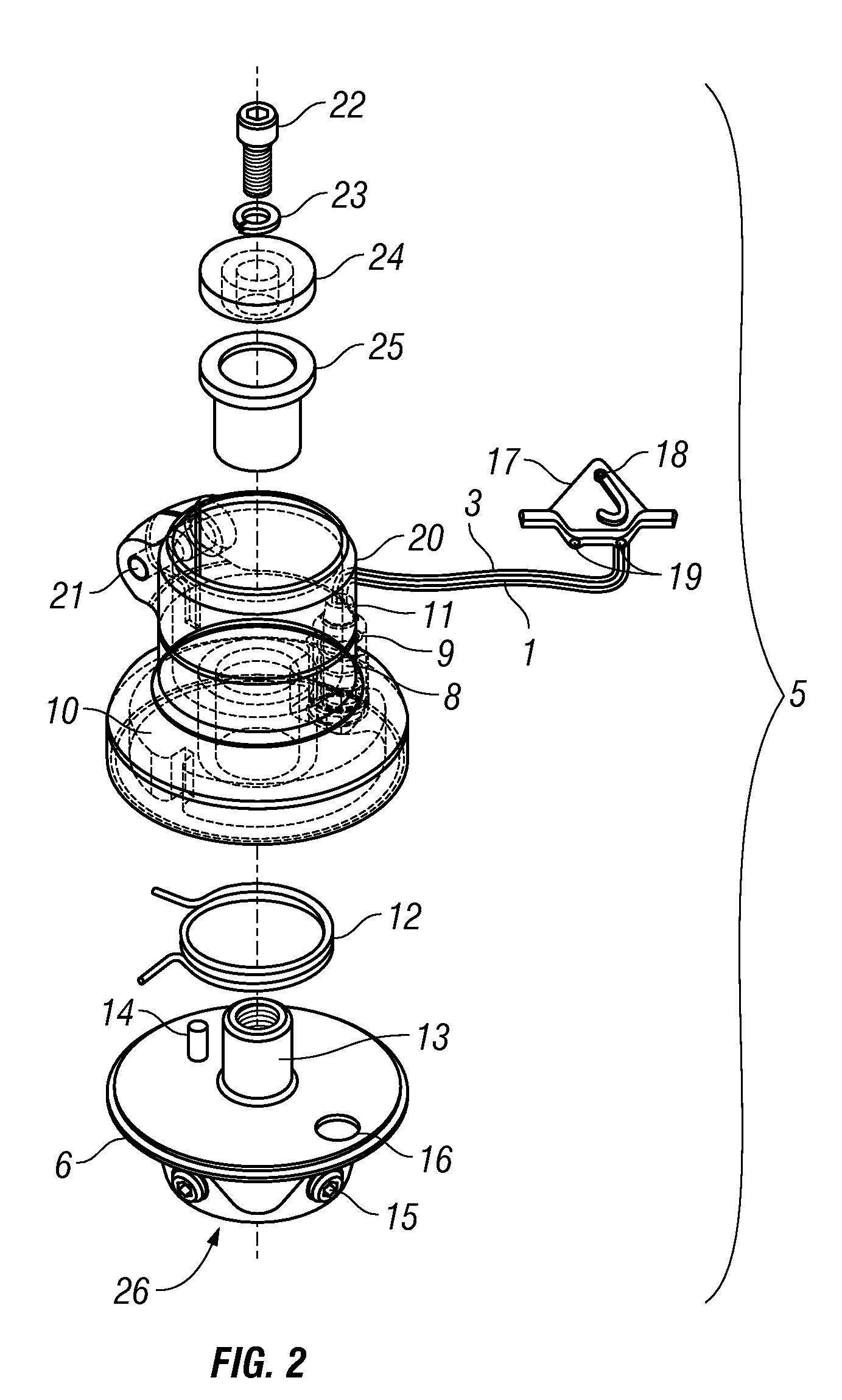Adjustable tension prosthetic ankle rotatory device for lower limb apparatus
a rotatory device and lower limb technology, applied in the field of modular prosthesis assemblies, can solve the problems of limiting or restricting the flexibility or range of lower body movement of amputees, discomfort of amputees, and prosthetic assemblies for transtibial amputees, and achieves the effect of facilitating more comfortable biomechanical positions and alleviating discomfor
- Summary
- Abstract
- Description
- Claims
- Application Information
AI Technical Summary
Benefits of technology
Problems solved by technology
Method used
Image
Examples
Embodiment Construction
[0020]The present application discloses embodiments of an Adjustable Tension Prosthetic Ankle Rotatory Device for Lower-Limb Amputees. Details are set forth to provide a thorough understanding of the embodiments of the present inventions with the help of the drawings but not limited to.
[0021]The features, structures, materials, and characteristics of the inventions can be combined in any suitable manner in one or more embodiments.
[0022]FIG. 1 illustrates a below knee prosthesis according to one embodiment. A modular patellar tendon bearing prosthesis may include an appendage socket 2 that securely accommodates the stump of an amputated leg. The appendage socket 2 is physically connected to a modular shank component 4, for example, a modular below-knee prosthesis. The modular shank component 4 is rotatably attached to a modular foot component 7, for example, a modular foot prosthesis.
[0023]The modular foot component 7 may be rotatably attached to the modular shank component 4 with a ...
PUM
 Login to View More
Login to View More Abstract
Description
Claims
Application Information
 Login to View More
Login to View More - R&D
- Intellectual Property
- Life Sciences
- Materials
- Tech Scout
- Unparalleled Data Quality
- Higher Quality Content
- 60% Fewer Hallucinations
Browse by: Latest US Patents, China's latest patents, Technical Efficacy Thesaurus, Application Domain, Technology Topic, Popular Technical Reports.
© 2025 PatSnap. All rights reserved.Legal|Privacy policy|Modern Slavery Act Transparency Statement|Sitemap|About US| Contact US: help@patsnap.com



